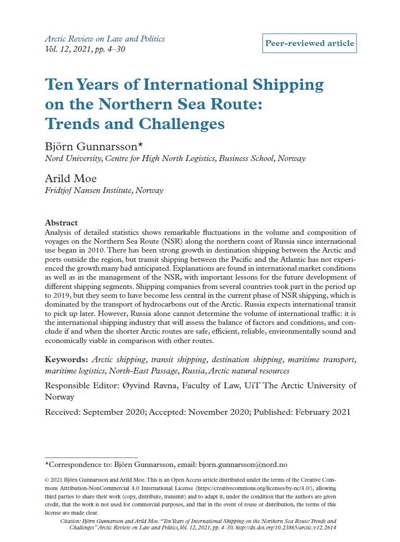Publication: Ten Years of International Shipping on the Northern Sea Route: Trends and Challenges
To download the publication please click on the download link at the bottom of the page
Authors: Björn Gunnarsson, Arild Moe
CNARC member: Fridtjof Nansen Institute (FNI)
Abstract: Analysis of detailed statistics shows remarkable fluctuations in the volume and composition of voyages on the Northern Sea Route (NSR) along the northern coast of Russia since international use began in 2010. There has been strong growth in destination shipping between the Arctic and ports outside the region, but transit shipping between the Pacific and the Atlantic has not experienced the growth many had anticipated. Explanations are found in international market conditions as well as in the management of the NSR, with important lessons for the future development of different shipping segments. Shipping companies from several countries took part in the period up to 2019, but they seem to have become less central in the current phase of NSR shipping, which is dominated by the transport of hydrocarbons out of the Arctic. Russia expects international transit to pick up later. However, Russia alone cannot determine the volume of international traffic: it is the international shipping industry that will assess the balance of factors and conditions, and conclude if and when the shorter Arctic routes are safe, efficient, reliable, environmentally sound and economically viable in comparison with other routes.
Keywords: Arctic shipping, transit shipping, destination shipping, maritime transport, maritime logistics, North-East Passage, Russia, Arctic natural resources


